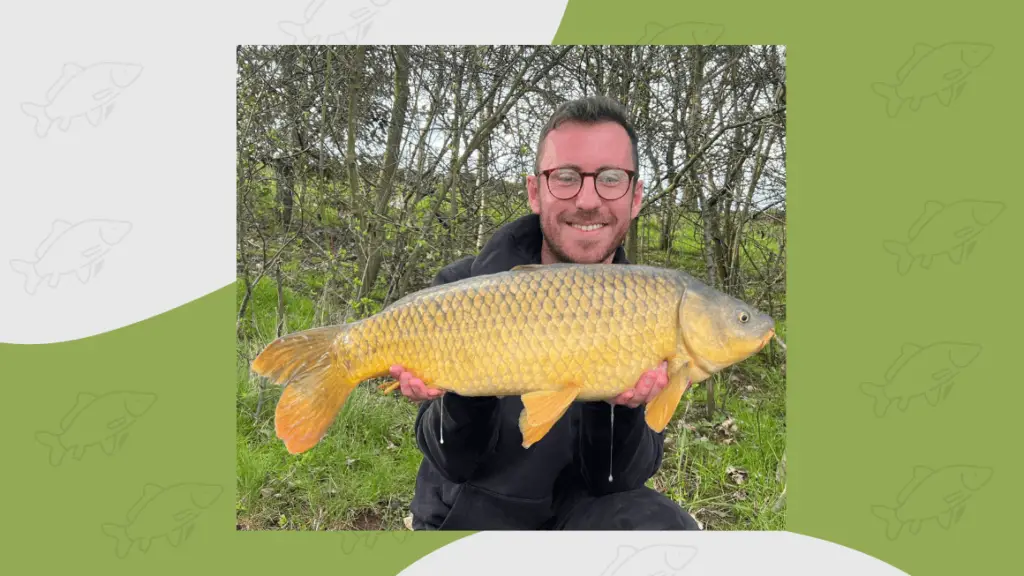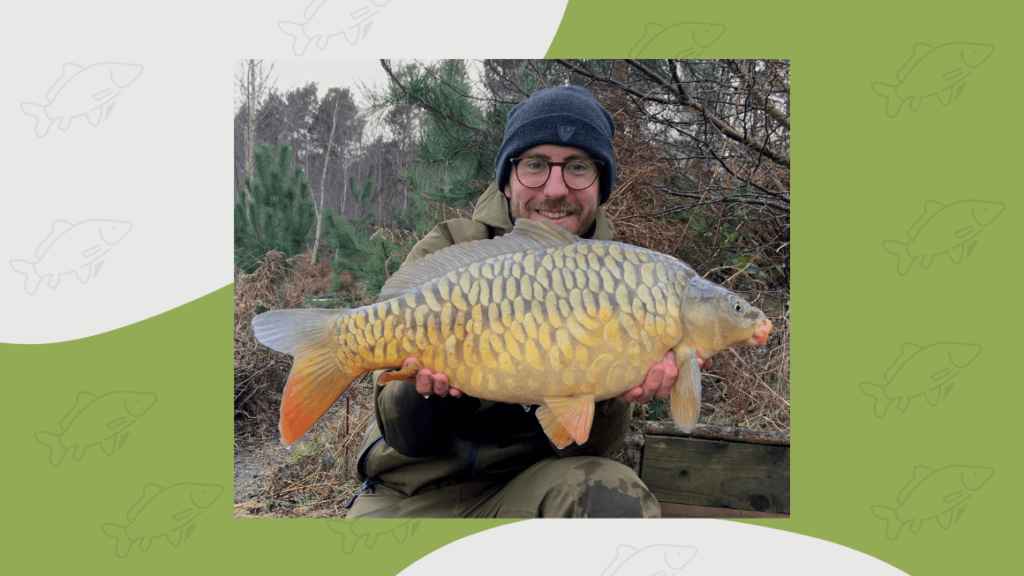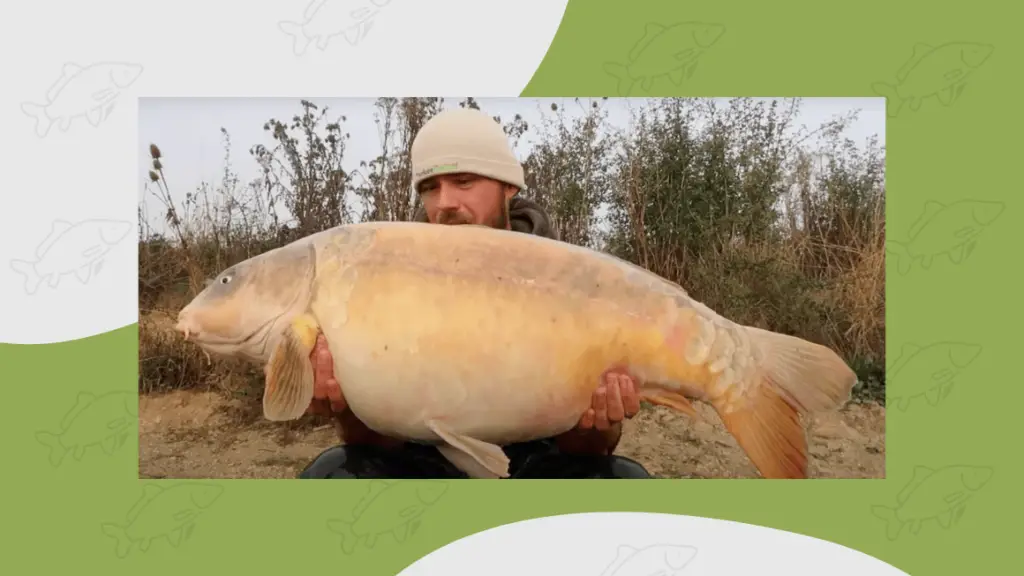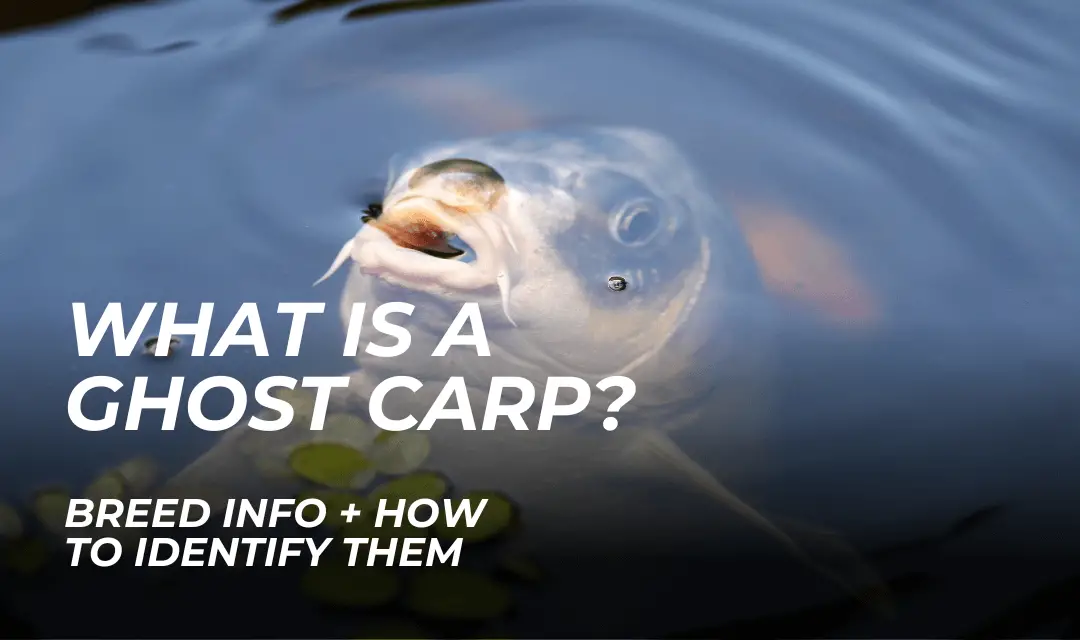There are two types of carp you are likely to encounter the most when fishing in the UK; mirror carp and common carp.
But as a species, carp, otherwise known as ‘Cyprinus Carpio’ offer much more in terms of their distinct types. Every now and then you might find yourself peering into your landing net at something a little less common.
Other types of carp that you may encounter in the UK include leather carp, ghost carp, koi carp, grass carp and crucian carp.
You may even hear some people referring to a carp as a linear or fully scaled.
But how did this species spread so far and wide and become such a disable target for anglers in the UK? And how do you tell the difference between each type of carp?
Let’s take a look at the history or each and help you identify each one.
Common Carp – The Original Type of Carp
Common carp have a rich history in the UK, introduced by the Romans around 2,000 years ago for their culinary value. Believe it or not, they are still commonplace on many dinner tables across Europe and Asia.
But it wasn’t long before carp began to capture our imagination for fishing purposes.
These hardy fish quickly adapted to the British climate and spread throughout the country’s lakes, rivers, and canals.
Easily identifiable, common carp possess small scales covering their olive-green or golden-brown skin, in a repetitive manner.
Many common carp carp look near on identical due to their scale pattern. As a result, fishery owners often face difficulty tracking growth rates.
Whilst the scale pattern is what makes a great common carp, anglers are often put off by their lack of uniqueness. Quite often, you’ll find that anglers prefer to catch mirror carp which are well known for their unique colourations and scale patterns.
That being said, a big common carp is still a very well-sought after prize in the UK.
Examples of Common Carp
Here are some examples of common carp that I have caught in the past. Hopefully these help you identify what’s in the bottom of your landing net!



Mirror Carp (The Most Common Type of Carp in The UK)
The mirror carp is undoubtedly the most common of the carp species in the UK. (Despite their being an actual type of carp called common carp!).
Years of breeding for fishery purposes has led to this species taking over the common carp which was originally introduced all those years ago.
Mirror carp are selectively bred for their unique scale patterns. It’s extremely rare that you will find two mirror carp that look near-on identical.
Mirror carp have fewer scales compared to common carp, resulting in a mirror-like appearance.
Their scales are irregularly scattered, giving each fish a distinctive pattern. Some mirrors may have only a few large scales near their dorsal area or scattered scales across their body. Others may have clusters or lines of scales that look like a zip across it’s flank.
Mirror carp in the UK can grow to impressive sizes, with the biggest carp in the UK currently recorded at 68lb 1oz. They can grow even bigger in warmer climates, and it’s not uncommon to see fish of over 90lb caught in Europe.
Examples of Mirror Carp
Here are some mirrors to give you some more context to this type of carp.


Other Types of Mirror Carp
Whilst not a strain in their own right, for carp fishing beginners, it’s important to note the different names given to mirror carp with specific scale patterns.
You’ll quite often hear anglers talking about how they caught a ‘linear’ or ‘fully scaled’.
Linear
A linear is the name given to mirror carp that possess an almost straight set of scales down it’s flank.
Whereas the traditional mirror will have scattered scales, linears look like they’ve almost got a zip going down the middle of their bodies.
These are highly sort after, often becoming the most aesthetically pleasing carp in the lake. Below is an example of a very old linear that I recently caught from Wintersett Fisheries Cold Hiendley.
You can see why there are a lot of anglers that want to catch this one!

Fully Scaled
I’m not sure if much explanation will be required for this one! The name says it all.
A fully scaled mirror is exactly that; a mirror with scales all over as opposed to randomly scattered.
The difference between these and common carp is that commons have a repeated pattern of the same size scales.
Fully scaled mirror are often gold in their appearance, with scales like large apple slices.
Like linears, fully scaled carp are rare and often become the most prized asset of any water.
Here’s a prfect example of a fully scaled I recently caught from Hodgetts Lake Norton Disney.

Leather Carp
Leather carp are one of the rarest types of carp in the UK.
They look most similar to mirror carp, however possess fewer scales on their body.
the lack of scales results in a smooth skin, giving them a unique texture and appearance.
Their skin appears leathery, hence the name, and they often exhibiting subtle color variations. Depending on the water clarity, leather carp can often show bright orange colours or washed out grey flanks.
It can often be tough to spot a leather carp, and more often than not they will have a few small scales close to the wrist of their tale. Leather Carp are genetically challenged in comparison to commons and mirrors. They have a reduced capacity to regrow tissue which often leads to withered finds.
Due to their rarity in carp lakes in the UK, they are very sought after. Some of the most prized carp in the UK have been leather carp. But likewise due to their poor growth rates, this type of carp are very rarely selected for breeding and fishery stocking.
The most famous leather carp in the UK was a fish known as ‘Heather the Leather’ which resided in the famous Yateley Carp Park Lake. This was very sought after, angled for by the likes of Terry Hearn, Nigel Sharp and Gaz Fareham.
Examples of Leather Carp

Ghost Carp
Ghost carp are a captivating variant of common carp, known for their striking appearance. They are believed to have originated from a genetic mutation, resulting in their pale coloration and reduced scale patterns.
Ghost carp were first discovered in the UK during the late 1970s, and since then, they have gained popularity among carp anglers. They are typically stocked by fisheries to add a little something extra to the mix.
Alternatively, you may see them swimming around your local park lake. These are often pets which have outgrown their tanks at home and been thrown in!
If you’ve seen a ghost carp swimming then you’ll quite quickly realise how they gained their name. Their ethereal appearance and transparency are easy to spot.
In the UK, ghost carp (or ghosties) can reach top weights matching that of the common carp. The current largest ghostie in the UK is thought to be 60lb plus, a mammoth carp that resides in a syndicate lake ran by Embryo Angling.
Examples of Ghost Carp

Koi Carp
Ever gone down to your local lake and seen what looks to be a huge goldfish swimming around?
Chances are that’s a koi carp! While not native to the UK, koi carp have been introduced into some lakes and fisheries for their ornamental value.
These vibrant fish originate from Japan, where they were selectively bred for their stunning colours and patterns. In fact, there’s a few swimming around in a pond inside my local Japanese restaurant in Leeds! – Yes, I was tempted to take the rods!
Koi carp boast a dazzling array of colours and intricate patterns, ranging from vibrant reds and oranges to striking blues and whites. Their unique beauty adds charm to any fishery.
However, some fisheries do get a bit of backlash from anglers who want to retain the more traditional strain of carp in the UK.
Perhaps the best part about koi carp is how easy they are to spot. Koi’s will often give away the whereabouts of an entire shoal of carp. – A bit like having that really loud mate that makes loads of noise down the pub!
Growth-wise, it’s rare to see them reach any bigger than 40lb.
Examples of Koi Carp

Grass Carp
Grass carp, though not native to the UK, have been introduced into some waters to control aquatic vegetation.
These herbivorous fish were initially brought to the UK for their ability to consume excessive aquatic plants and maintain ecological balance. – At least that was the idea!
The biggest difference between this species of carp and other types of carp is the body shape.
Grass carp have elongated, torpedo-shaped bodies with large scales. They are known for their olive-green or golden-brown coloration, blending in with their natural environment. Grass carp possess a downward-facing mouth that allows them to graze on submerged vegetation efficiently.
They are quite rare in the UK, so are seen as quite a prize by carp anglers. They put up one hell of a fight too!
Grass carp can reach significant sizes, often exceeding 30lb and occasionally surpassing 50lb over in Europe.
Grass Carp Examples

Conclusion
The UK is home to a diverse array of carp species, each with its own history, appearance, and average size. From the iconic common carp to the captivating koi carp, these fish provide endless excitement and challenges for anglers across the country.
Understanding the characteristics of each carp type enhances the angling experience, making it easier to target specific species and appreciate the beauty they bring to UK waters.
Hopefully this article gives you an insight into the different types of carp that you can find swimming in our waterways.
About the writer

Rob W
I’m Rob, Carp Squad’s main contributor. I’ve been carp fishing on and off for 15 years, but the bug is well and truly back at the moment. Hopefully the articles I write on here help you put more carp on the bank.


![Stocks Lake Norton Disney [Tips & Tactics]](https://carpsquad.com/wp-content/uploads/2023/11/stocks-lake-norton-disney-2-1.png)

